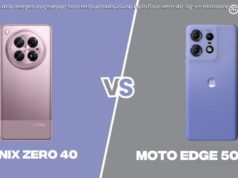Array
With the launch of their flagship Snapdragon 8 SoC firmly behind them now, Qualcomm this morning is turning their collective head towards the premium market with the launch of another new Snapdragon 8 family SoC, the Snapdragon 8s Gen 3. The first of Qualcomm’s ‘s’-subseries of down-market parts to be released under the Snapdragon 8 banner, the Snapdragon 8s Gen 3 (8SG3) is intended to be a bridge part between the last-gen flagship 8 Gen 2 and current-gen flagship 8 Gen 3, offering a not-quite-flagship experience at a lower price point than Qualcomm’s top SoC. The new SoC is set to be available globally, with the first phones announced this month, though as is often the case for Qualcomm’s “premium” SoCs, the initial list of customers is entirely comprised of Chinese handset OEMs.
Although Qualcomm prefers to draw comparisons to their current gen flagship Snapdragon 8 Gen 3, the Snapdragon 8s Gen 3 is by and large and enhanced version of the Snapdragon 8 Gen 2. Many of the hardware blocks of the 8G2 have been carried over to the new chip – either in whole or in terms of functionality – a process that is made very easy thanks to the fact that Qualcomm is building the chip on the same TSMC 4nm node as the 8G2 and 8G3. Compared to the 8G2 then, there are two key differentiators for the 8SG3: a newer CPU complex lifted from the 8G3, and official on-device generative AI support.
Starting with the CPU complex, Qualcomm is implementing Arm’s latest generation of Armv9 CPU cores here, meaning a mix of the Cortex-X4, Cortex-A720, and Cortex-A520. Relative to the flagship 8G3, the 8SG3 gives up one of its performance cores for another efficiency core, shifting the design from a 1/5/2 configuration to a 1/4/3 configuration – the same as the 8G2. The 8SG2 also loses some frequency headroom in the process, with the X4 prime core dropping from 3.3GHz to 3.0GHz, and the other CPU cores following similarly along.
Still, the 8SG3 should outperform the 8G2 in CPU tasks, which is the primary reason for replacing the CPU complex at all.
Home
United States
USA — IT Qualcomm Announces Snapdragon 8s Gen 3: A Cheaper Chip For Premium Phones






